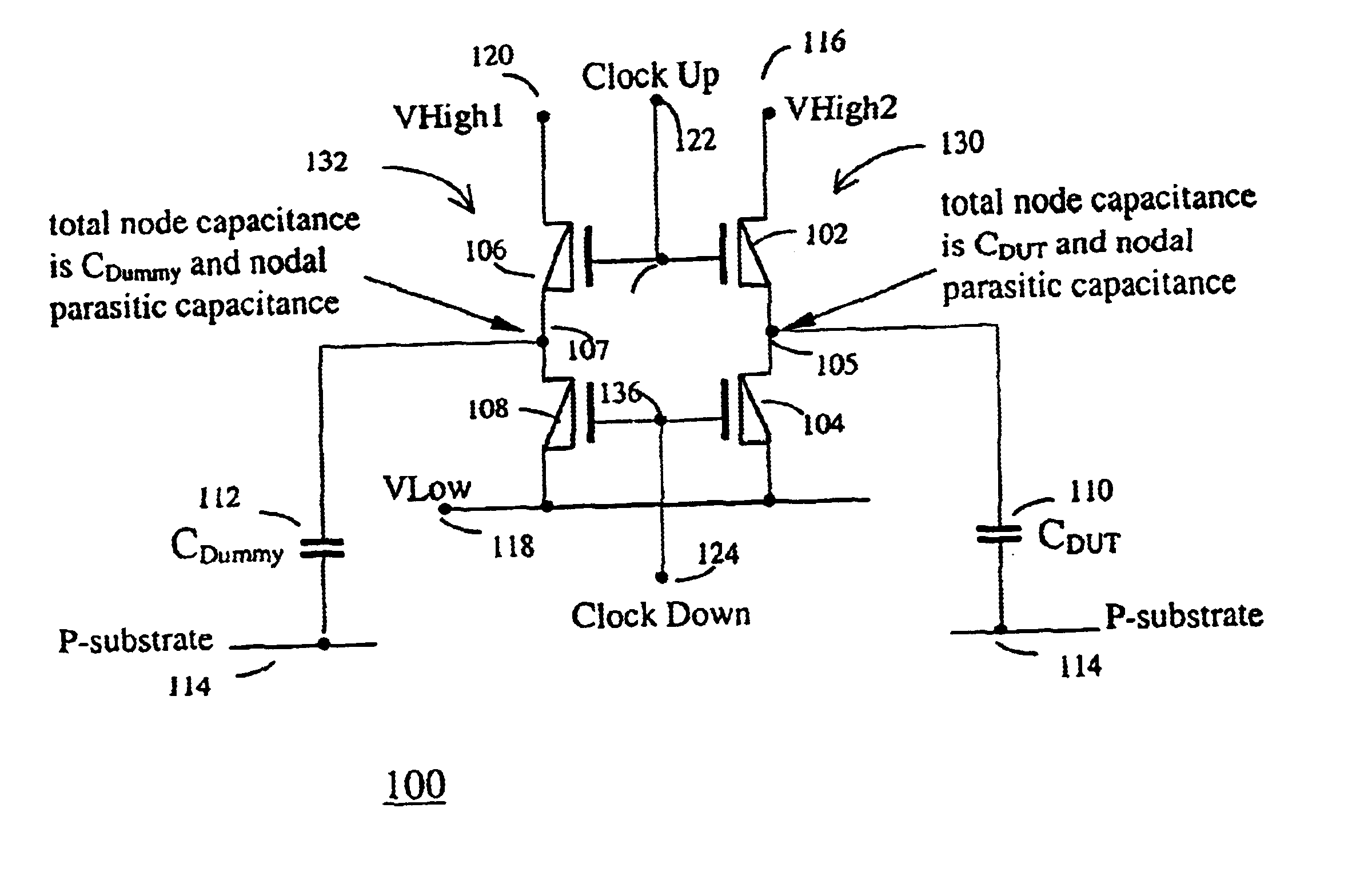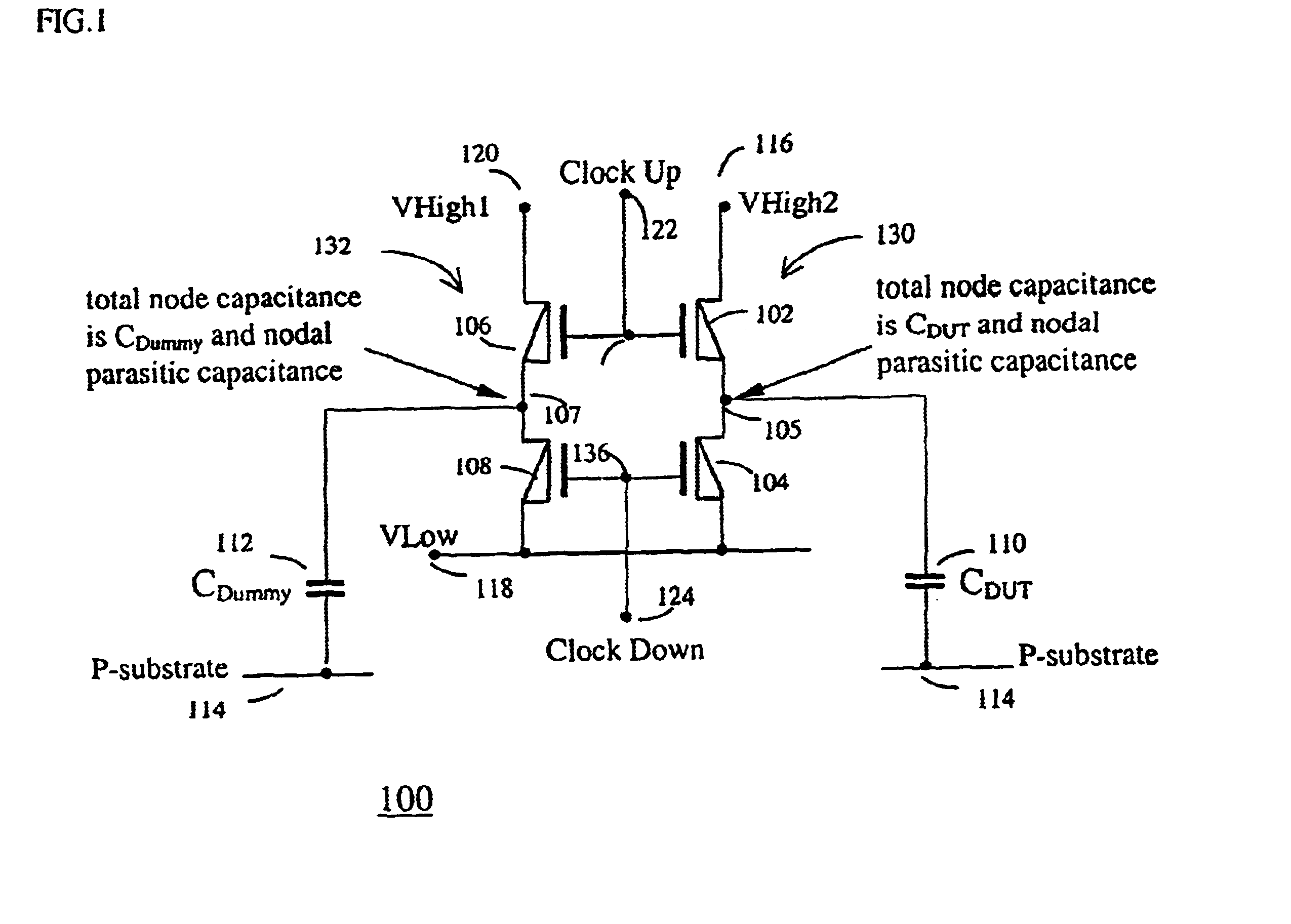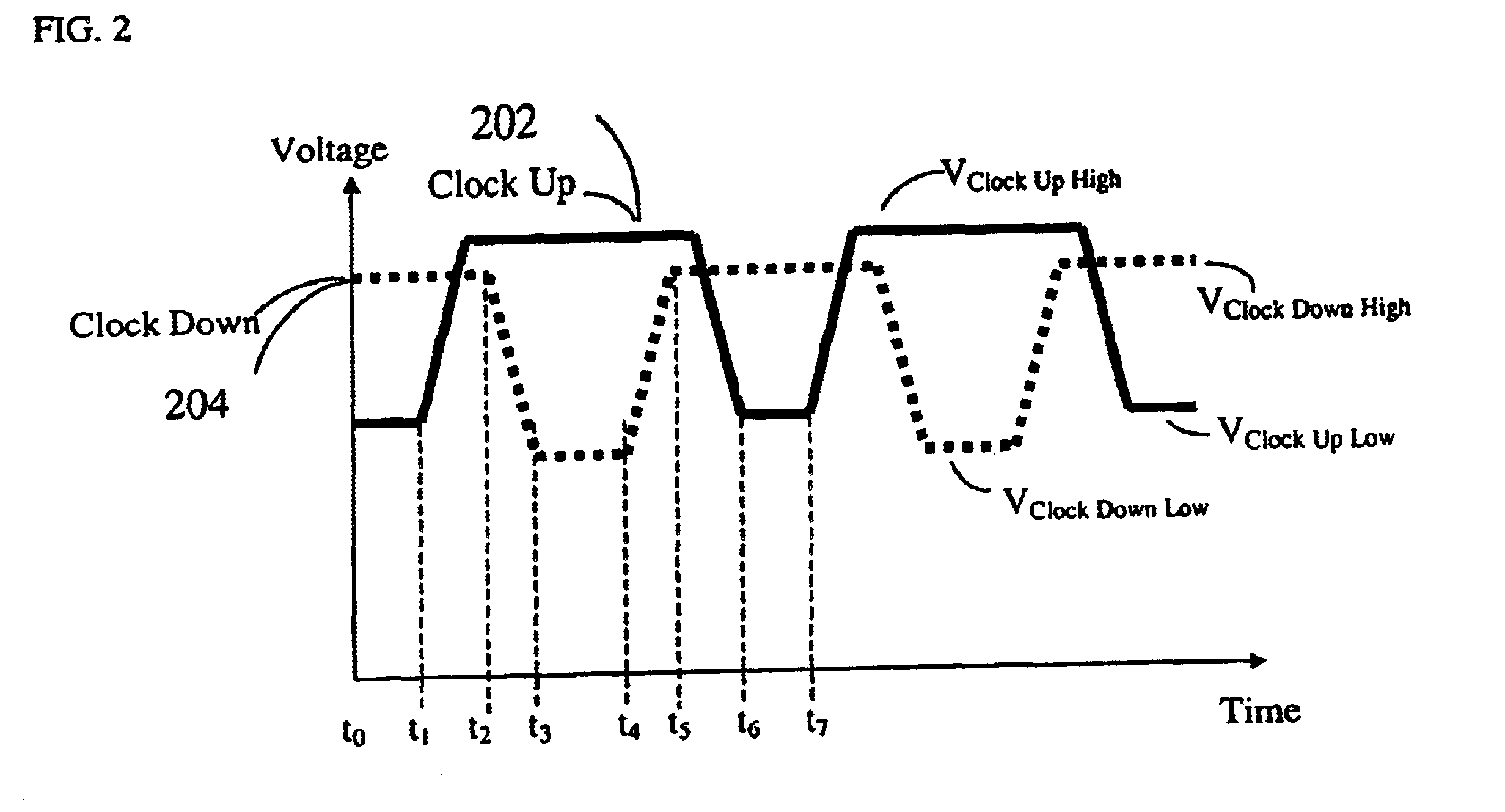Clocked based method and devices for measuring voltage-variable capacitances and other on-chip parameters
a voltage-variable capacitance and clock-based technology, applied in the testing/measurement of individual semiconductor devices, semiconductor/solid-state devices, instruments, etc., can solve the problems of increasing unreliability of measurement, inaccurate and unreliability, and cumbersome metering
- Summary
- Abstract
- Description
- Claims
- Application Information
AI Technical Summary
Benefits of technology
Problems solved by technology
Method used
Image
Examples
Embodiment Construction
Referring now to FIG. 1, it shows a schematic diagram of a test circuit 100 used for measurement of integrated circuit parameters. The test circuit 100 includes a first transistor 102, a second transistor 104, a third transistor 106 and a fourth transistor 108. The third transistor is substantially the same in all regards as the first transistor. The fourth transistor is substantially the same in all regards to the second transistor. The test circuit 100 is connected to a device under test 110, in this case a capacitance labeled CDUT (Device Under Test Capacitance). In addition, the test circuit 100 includes a dummy capacitance 112, labeled CDUMMY. The device under test 110 is positioned between an output 105 of the test circuit 100 and the substrate 114. Similarly, the dummy capacitance 112 is electrically located between a node 107 and the substrate 114. Note that the device under test capacitance and the dummy capacitance are connected to the substrate 114 in this embodiment. Alt...
PUM
 Login to View More
Login to View More Abstract
Description
Claims
Application Information
 Login to View More
Login to View More - R&D
- Intellectual Property
- Life Sciences
- Materials
- Tech Scout
- Unparalleled Data Quality
- Higher Quality Content
- 60% Fewer Hallucinations
Browse by: Latest US Patents, China's latest patents, Technical Efficacy Thesaurus, Application Domain, Technology Topic, Popular Technical Reports.
© 2025 PatSnap. All rights reserved.Legal|Privacy policy|Modern Slavery Act Transparency Statement|Sitemap|About US| Contact US: help@patsnap.com



